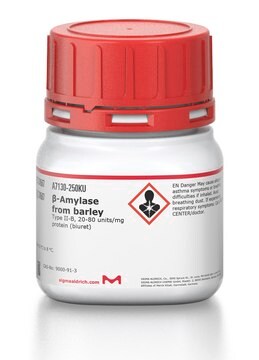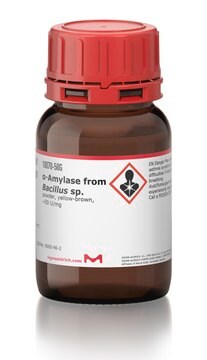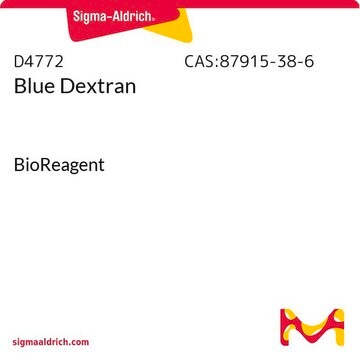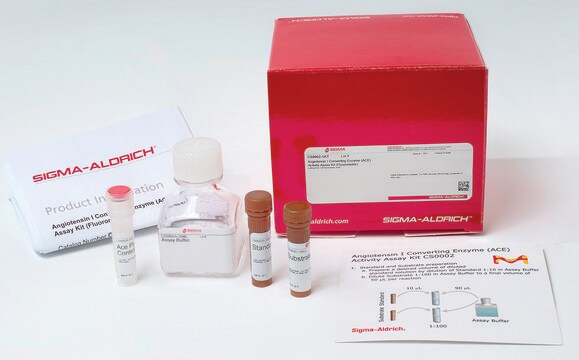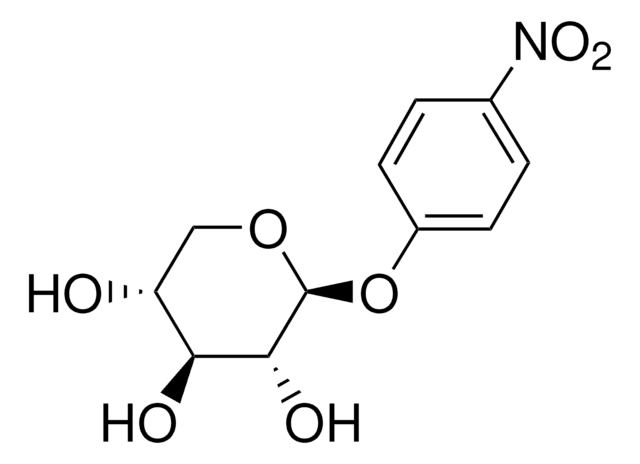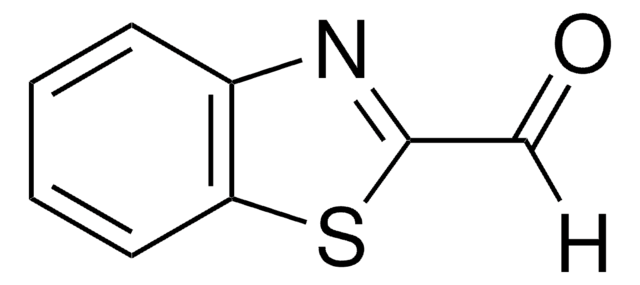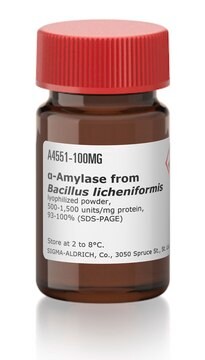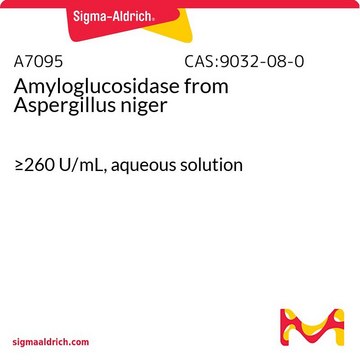A7005
β-Amylase from sweet potato
Type I-B, ammonium sulfate suspension, ≥750 units/mg protein (E1%/280)
Synonym(s):
1,4-α-D-Glucan maltohydrolase
About This Item
Recommended Products
biological source
sweet potato
Quality Level
type
Type I-B
form
ammonium sulfate suspension
specific activity
≥750 units/mg protein (E1%/280)
greener alternative product score
old score: 57
new score: 1
Find out more about DOZN™ Scoring
greener alternative product characteristics
Waste Prevention
Safer Solvents and Auxiliaries
Design for Energy Efficiency
Learn more about the Principles of Green Chemistry.
sustainability
Greener Alternative Product
concentration
≥7.0 mg/mL
greener alternative category
storage temp.
2-8°C
Looking for similar products? Visit Product Comparison Guide
General description
Application
- in the hydrolysis of starch and starch-pectin combinations
- for comparing amylases from different sources in Staphylococcus aureus SH1000 biofilm inhibition and reduction assay
- for selenium speciation in samples
Biochem/physiol Actions
Unit Definition
Physical form
Other Notes
Signal Word
Danger
Hazard Statements
Precautionary Statements
Hazard Classifications
Resp. Sens. 1
Storage Class Code
11 - Combustible Solids
WGK
WGK 3
Choose from one of the most recent versions:
Certificates of Analysis (COA)
Don't see the Right Version?
If you require a particular version, you can look up a specific certificate by the Lot or Batch number.
Already Own This Product?
Find documentation for the products that you have recently purchased in the Document Library.
Customers Also Viewed
Articles
Instructions for working with enzymes supplied as ammonium sulfate suspensions
Protocols
Enzymatic Assay of β-AMYLASE (EC 3.2.1.2)
Our team of scientists has experience in all areas of research including Life Science, Material Science, Chemical Synthesis, Chromatography, Analytical and many others.
Contact Technical Service


